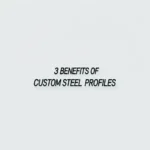Certain types of stainless steel are specifically designed and processed to be used as spring steel. While not all stainless steel alloys are suitable for springs, those designated as spring temper possess the necessary mechanical properties.


To function effectively as a spring, a material needs:
- High Yield Strength: To resist permanent deformation under load.
- Good Elasticity (High Modulus of Elasticity): To return to its original shape after the load is removed.
- Fatigue Resistance: To withstand repeated cycles of loading and unloading without failure.
- Sufficient Hardness and Tensile Strength: To handle the stresses involved.
Austenitic stainless steels like AISI 302, 304, and 316, as well as precipitation-hardening grades like 17-7PH, can be cold-worked (typically through cold drawing for wire) to achieve these properties. The cold working process significantly increases the tensile and yield strength, making the material suitable for spring manufacturing.
Therefore, while standard annealed stainless steel might be too soft for spring applications, stainless steel in a ‘spring temper’ condition, achieved through cold working, is an excellent choice for springs, especially when corrosion resistance or performance at different temperatures is required.
Can stainless steel be used as spring steel? — This article provides a practical buyer‑focused overview with specifications, selection tips, and on‑site considerations. Explore related topics: blog.
Key Specifications and Standards
- Standards: ASTM / EN / JIS (e.g., ASTM A240/A36, EN 10088/10025, JIS G4304/G3131).
- Surface options: 2B, BA, No.4, HL, mirror; galvanized (electro / hot‑dip).
- Processing: hot‑rolled, cold‑rolled, annealed & pickled, welded or seamless.
- Typical services: slitting, shearing, cut‑to‑length, drilling, beveling, deburring.
- Documentation: MTC, CO, packing list with net/gross weight and heat numbers.
Typical Applications
Construction, machinery, automotive, energy, enclosures and fencing, food equipment (for stainless), and general fabrication. Match grade and finish to corrosion, strength, and appearance requirements.
Selection Guide
- Use certified material with Mill Test Certificate (MTC).
- Confirm standards (ASTM/EN/JIS) and tolerances per drawing.
- Match surface finish to application (2B/BA/No.4/galvanized).
- Specify dimensions and acceptable deviation upfront.
- Plan packaging and corrosion protection for transit.
Processing, Packaging and Logistics
We adopt edge protection, waterproof wrapping, rust‑inhibiting paper, fumigated pallets, and strapping suitable for sea freight. Loading photos and weight lists are provided for each shipment.
FAQs
Q: What lead time can I expect?
A: Typically 7–15 days ex‑works for standard sizes; custom processing may extend the schedule.
Q: Can you provide cut‑to‑size service?
A: Yes. We slit, shear, cut, drill, bevel and deburr to drawing to reduce waste and speed installation.
Q: How do you ensure quality?
A: Incoming inspection, process control, and final inspection with traceable heat numbers; third‑party inspection is available.
Q: Do you support small trial orders?
A: We support pilot quantities with consolidated shipping to control cost.
All values are typical and for guidance only; confirm with the datasheet and purchase order before production.
Related products: view details.
Related products: view details.





